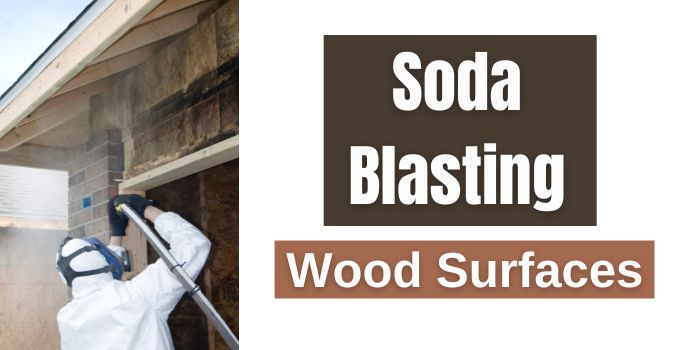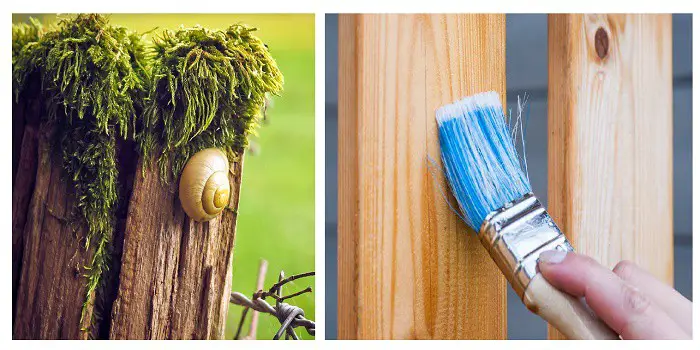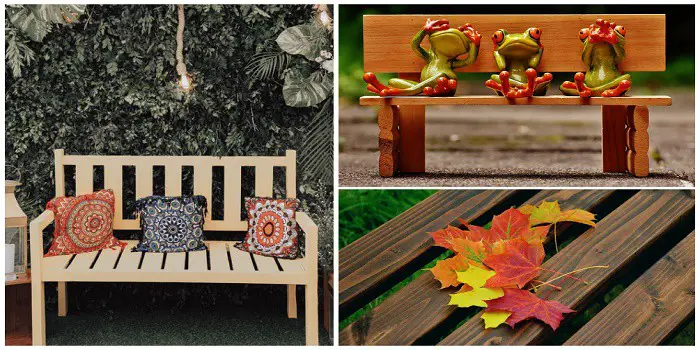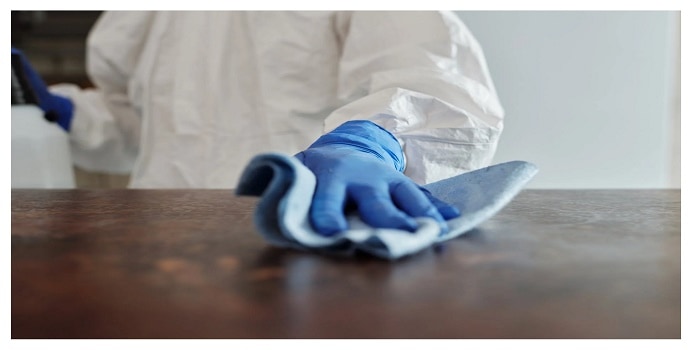
When you’re working on a big refurbishing or renovation job, you may have large stretches of space that you need to clean.
This could mean removing mold, grease, peeling paint, residue, or any other substance you don’t want to work with.
Whether you are working in a room in the house, in a backyard shed, on a piece of furniture, or even car, the level of cleaning you’ll need to do can be too much to accomplish by hand.
Instead, you should consider what is called “soda blasting” to get the job done more efficiently and much more quickly.
Below, we’ll answer six of the most common questions regarding soda blasting.
Using this information, you can determine whether soda blasting is the right method for your specific project or not.
Why is it Called Soda Blasting?
Although soda blasting rests in the same category as other kinds of abrasive blasting, the material that you use is not abrasive at all.
Instead, soda blasting involves granulated sodium bicarbonate, which provides a much gentler treatment option than other kinds of granules, such as beads or shells.
These particles made of sodium bicarbonate are what give the method its “soda” name.
What are Some Uses for Soda Blasting?
Soda blasting is handy for various types of projects. It is often used on plastic parts, chrome surfaces, and even some types of glass, making it quite versatile.
Some say that sandblasting wood to get rid of grime, old paint, and other caked-on types of debris is better.
When it comes to softer metals such as aluminum and copper, soda blasting works like a charm. It is capable of polishing away light rust.
Note that if you are dealing with heavy rust on hard metals, you may prefer the efficiency of sandblasting instead.
Soda blasting will smooth out the surface that is currently being treated, and it may even stop rust from forming on the metal in the future.
Soda blasting can also be useful if you have an object or even a room that has been damaged by mold or smoke. The “soda” aspect of soda blasting also serves as a way to deodorize a space.
By soda blasting, you can get rid of more than dirt alone. You may also be able to minimize odors like pet urine, mildew, cigarette smoke, mold, or smoke from a fire.
In some cases, you may even be able to eliminate them entirely.
What are the Benefits of Soda Blasting Wood?
Before you start the process of soda-blasting wooden furnishings, you’ll need to be familiar with the process.
This will help you determine if this method is going to cause any damage to the underlying wood.
When you do it properly, soda blasting should not pose any harm to the wooden surface you’re working with.
Experts say that the most important thing with soda blasting is monitoring the level of pressure. If you use too little pressure, the process won’t be an effective or thorough one.
If you use too much pressure, you might cause damage to the material.
Be sure to try your soda blasting equipment on a spare piece of wood first to see just how much pressure you should be applying before moving on to the main project.
It is good to know that soda blasting won’t have any negative effects on the environment.
Any residue that comes from the process is non-toxic, water-soluble, and biodegradable, making the entire process not only effective but also eco-friendly.
In contrast to the rough nature of sandblasting, soda blasting does not leave behind pitted areas on a metal surface.
It also doesn’t warp or even overheat plastic. Instead, it provides a thorough and gentle cleaning that will gradually get rid of layers of grease or paint.
The process may be slower than sandblasting, but it is much quicker than using commercial-strength hydro-blasting methods.
In instances where high-pressure water streams aren’t effective and when sandblasting is too harsh and damaging, soda blasting is your best bet.
Are There Any Drawbacks of Soda Blasting to Keep in Mind?
There are a few downsides when it comes to using soda blasting that you should keep in mind.
First, it is pricier than sandblasting, so it may impact your budget. It may also take more time to get through tough layers of paint, rust, grime, or grease since it is so gentle.
Where sandblasting is preferred in those cases, the setup for sandblasting is much more complex than soda blasting.
You will need to protect and cover any surfaces and items that you don’t want to be exposed to the sand.
Another drawback of soda blasting is the cleanup process afterward.
Once you have soda blasted a building, wood furniture, or any other object, there will often be a white, powdery film that remains on the surface, which will need to be wiped down or sprayed to get the residue off.
Generally speaking, soda blasting is an effective and eco-friendly way to clean various materials and is worth considering even with these small disadvantages.
What are the Different Types of Blasting Materials for Wood?
With some surfaces, you will find that a simple cleaning material won’t cut it.
Media blastings, such as sand and soda blasting, has many uses. It comes in just as many options to choose from.
a) Hard vs. Soft Abrasives
Softer abrasives are usually better for cleaning since they can remove grime and dirt without much of an effect on the wood beneath.
This is especially beneficial if you are cleaning a delicate or soft surface like machinery, plastic, or wood.
Hard abrasives will remove more material more swiftly and can even be used to make a surface profile for the given material to accept a protective coating.
Hard abrasives work more quickly and will create a more prominent surface profile.
b) Friability, Abrasive Shape, and Recyclability
Angular abrasives will create a more defined surface profile and will work more quickly.
Round abrasives, on the other hand, will generate a satin finish and are best when there is no need for surface coating later down the line.
An abrasive that breaks up into smaller pieces features a high level of friability (ability to be crumbled), while those that don’t have lower friability are typically recyclable.
This means you can collect and use it through a claiming system.
Sandblasting vs. Soda Blasting – What’s the Difference Between Both?
There are different types of abrasive cleaning that are commonly used in various scenarios. These include:
- Soda blasting
- Sandblasting
- Coconut shell blasting
- Walnut shell blasting
- Glass bead blasting
Of these different kinds of media, the most popular and commonly used are soda and sandblasting.
When trying to figure out which method is best for your needs, it is important to know the main features of both.
Soda blasting refers to one kind of the many different media substances used to blast surfaces. Soda blasting is better for the environment, as the residue is water-soluble and won’t contaminate the living spaces of wildlife or people.
It is also gentler than sandblasting, which makes it preferable for anyone who is working with softer materials.
Sandblasting is a more forceful process that is better for hard materials and getting rid of tough grime.
It also makes the cleaning job a swifter one since it uses more power behind it, but it requires more setup and often more cleanup once all is said and done.
At the end of the day, the method you use comes down to the kind of materials you are working with. Keep this in mind when determining the best way to clean.

Hi, I am Mark Garner a professional carpenter, woodworker, and DIY painter. I live in the small city of Peoria, Arizona as a semi-retired woodworker. I have started this blog with a simple motive to help you with my wood experience in this sector. If you like to know more about what I love doing and how it all got started, you can check more about me here.




